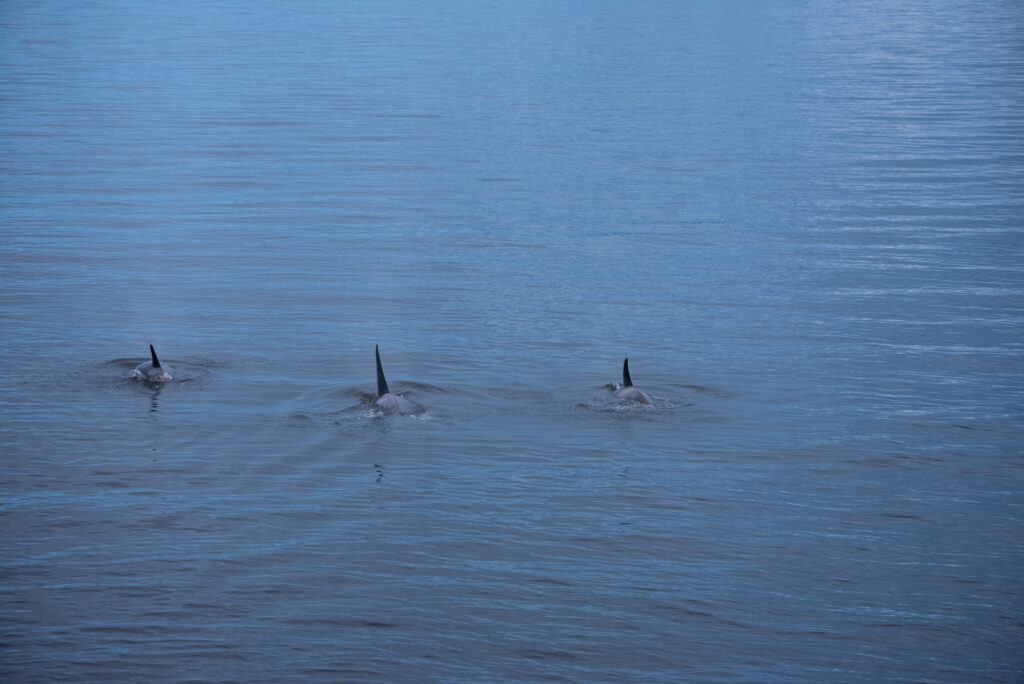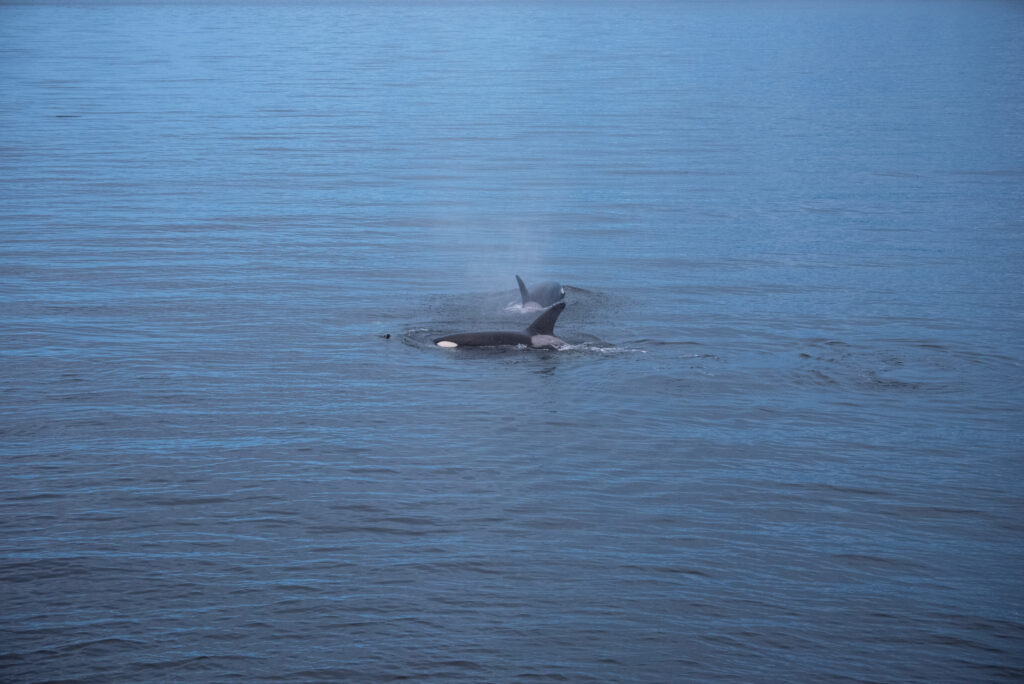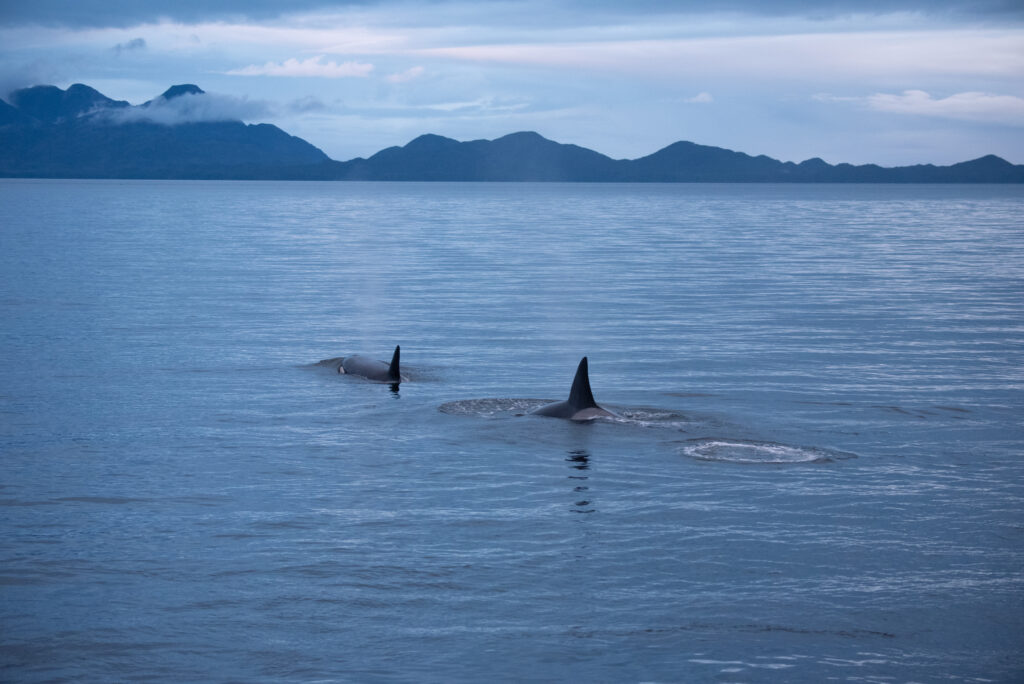Evening Orca Hunt
It was a still, peaceful Friday evening on Squally Channel at the Fin Island Research Station–a surprise to me, as we endured some heavier rain and sizable waves throughout the afternoon that I was sure would continue into the evening. Instead, hues of blue and yellow accentuated the surrounding silhouetted mountains, clouds dancing around their peaks as the sun began its descent. It was a cabin day, and sleep was beckoning all of us earlier than usual due to long days of marine surveys and data collection. At around 9pm, most of us were already in bed with heavy eyes and semi-alertness.

Photo by Jenn Dickie
I was sitting on a bench in the cabin near the windowsill, journaling the day’s happenings before I’d turn in for the day myself. Trying to be conscious of my noise levels, I was hyper-aware of the clickity-clack sounds of my typing fingers, the soft lull of the waves, and a different noise coming behind me from a distance, like a high-pitched, creaking squeal. As I kept on typing, focused and tired, I assumed these high-pitched sounds were coming from one of the team members’ computers, perhaps reviewing some old footage. I was used to hearing different vocalizations of whales through our hydrophones, such as the humpbacks’ bubblenet feeding calls or grunts–but never this particular sound. Jenn must have heard them, too. “Oh, what have we got here?” she asked, as she walked over to the hydrophone monitor, which visually and audibly displays the vocalizations of whales in the area in real-time. As the monitor was off, it was difficult for her to pinpoint exactly what was happening. But she didn’t need to after all–as we turned our heads out the window to see what was going on, we simultaneously noticed a quick flash of a new sight for us this season: Orca dorsals 10 meters off of the shore, right in front of the station.

Photo by Jenn Dickie
“WHOA! WHALE!” Jenn announced, as she hurriedly grabbed her camera and ran outside while I picked up the lab camera. We scrambled out onto the deck as Janie and Grace followed, and I instinctively knew what was unfolding in front of my eyes, despite never having seen Orca before. Swimming closer and closer towards shore, four dorsal fins were hurriedly circling up to seize up their prey: a hunt. I started to run down to the rocky shore, my body being guided by adrenaline alone. It all happened in a matter of seconds– orca bodies leaping out of the water, scattered mists from their blows spraying about, water stirring from their fins and tails in swift, calculated movements–and yet, an eerie tranquillity throughout it all. I could not believe what was occurring a mere 3 meters in front of me off of the rocks, and I wondered if the orcas would be successful in their hunt, or if their prey stood any chance to reach the safety of our shores. But alas, as the action subsided and the Orcas began to swim away, it became clear to us: the Transient Orcas would not go hungry that night.

Photo by Jenn Dickie
Standing barefoot on the damp observation deck in our pyjamas and enduring the small, hungry black flies around us, we followed the pod through the eyes of Grace’s deployed drone, the footage displayed live on a small screen at her fingertips. As the Orcas swam further from us into the middle of Squally channel, we observed their behaviour in silent awe from a birds-eye view, as they carried and eventually shared their captured seal cooperatively among themselves. We turned to one another in amazement and with mixed emotions: shock, awe, and thrill, contrasted with sadness and empathy for the seal. It was a humbling stroke of luck and a moment in which we realized we had witnessed the circle of life at our feet. Heading back inside after recording and concluding our observations, another thing was certain: we wouldn’t be sleeping so easily that night after all!
